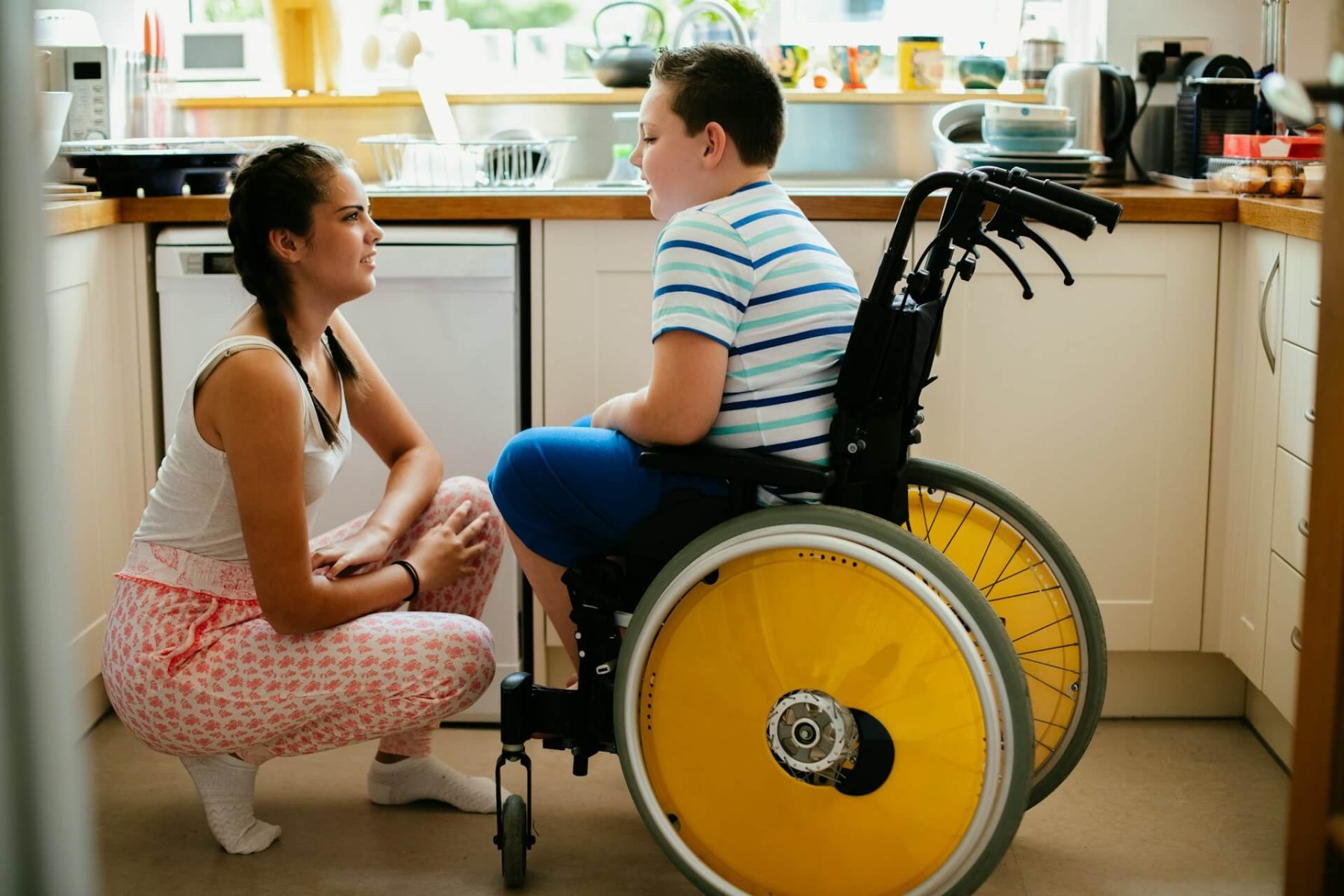Making decisions about disability support options can be overwhelming, especially when they impact where and how you or your loved one will live. For NDIS participants in Cairns and across Australia, two primary pathways exist: Supported Independent Living (SIL) and In-Home Support. Both offer valuable assistance but cater to different needs, preferences, and circumstances. Understanding the nuances between these options is crucial for making an informed choice that enhances quality of life and promotes independence.
The right support system can transform daily living from a series of challenges into a journey of empowerment and possibility. Whether you’re exploring options for yourself, a family member, or someone under your care, this comprehensive comparison will help clarify which path might be best suited to your unique situation.
What Are Supported Independent Living and In-Home Support?
Supported Independent Living (SIL) is an NDIS-funded support option that provides assistance to people with disabilities living in shared accommodation settings. SIL focuses on developing practical life skills and fostering independence within a supportive community environment. Support workers are typically available 24/7, helping residents with daily activities ranging from personal care to meal preparation and community engagement.
In contrast, In-Home Support brings assistance directly to an individual’s existing home. This model allows people with disabilities to remain in familiar surroundings—whether their own home or a family residence—while receiving tailored support. Care is delivered on a flexible schedule based on individual needs, which might include personal care, household management, or assistance with community participation.
How Do Living Arrangements Differ Between SIL and In-Home Support?
The living environment forms perhaps the most significant distinction between these two support models.
In a Supported Independent Living arrangement, participants typically share accommodation with others who have similar support needs. These shared homes are designed to foster both independence and community, creating opportunities for social interaction and shared experiences. Residents generally have their own bedrooms but share common areas like kitchens, living rooms, and outdoor spaces.
With In-Home Support, individuals remain in their current living situation—often their family home or their own private residence. This option prioritises continuity and familiarity, allowing people to maintain established routines and connections within their communities. The support comes to them, adapting to their existing lifestyle rather than requiring them to adapt to a new environment.
| Feature | Supported Independent Living (SIL) | In-Home Support |
|---|---|---|
| Living Environment | Shared accommodation with others requiring similar support | Individual’s own home or family residence |
| Privacy Level | Private bedroom with shared common areas | Complete privacy within own home |
| Social Setting | Built-in social interaction with housemates | Existing family/social network |
| Support Availability | 24/7 on-site assistance | Scheduled visits based on need |
| Home Modifications | Accommodation already adapted for accessibility | May require specific modifications |
Who Benefits Most From Each Support Option?
Different support needs and personal preferences make each option more suitable for certain individuals.
SIL may be ideal for people who:
- Require significant daily assistance with personal care, meal planning, or medication management
- Thrive in social environments and enjoy regular interaction with peers
- Are working toward building greater independence and life skills
- Need round-the-clock access to support due to complex care requirements
- Would benefit from structured routines and consistent support
In-Home Support tends to suit individuals who:
- Have strong preferences for remaining in their existing home environment
- Value privacy and maintaining established daily routines
- Need intermittent rather than constant support
- Have family members who provide some care but need professional assistance
- Desire greater control over their living environment and support schedule
- Have moderate support needs that don’t require overnight assistance
The choice often balances practical support requirements with personal preferences about living arrangements, privacy, and social interaction. Neither option is inherently better—they simply serve different needs and priorities.
What Level of Care Does Each Option Provide?
The intensity and structure of care vary significantly between SIL and In-Home Support, reflecting their different approaches to fostering independence.
Supported Independent Living offers a comprehensive support framework that typically includes:
- 24/7 access to support workers
- Structured skill development programs
- Assistance with daily living activities (bathing, dressing, meal preparation)
- Medication management and health monitoring
- Transport assistance and community access support
- Social skills development within a communal setting
In-Home Support provides more flexible, tailored assistance such as:
- Scheduled support visits based on individual requirements
- Personal care assistance during specific times of day
- Household management support (cleaning, laundry, shopping)
- Community access and transport on an as-needed basis
- Assistance with health routines and appointments
- Support that adapts as needs change over time
It’s important to note that SIL funding covers support worker costs but not accommodation expenses or daily living costs. Residents still pay rent, utilities, and personal expenses from their own funds. Similarly, In-Home Support funding focuses on care provision rather than housing costs.
How Does Funding Work for SIL vs. In-Home Support?
Understanding the funding structures for both options is essential for making practical decisions about care.
For Supported Independent Living, the NDIS typically funds:
- Support worker wages and related costs
- Shared support costs among residents
- Skill development programs
- Overnight assistance
The NDIS does not cover:
- Rent or mortgage payments
- Utilities and household bills
- Food and personal items
- Home maintenance costs
For In-Home Support, NDIS funding generally includes:
- Scheduled support worker visits
- Personal care assistance
- Domestic help
- Community access support
- Transport assistance for community participation
In both cases, funding is allocated based on assessed needs through an NDIS plan. The key difference lies in how the support is delivered and scheduled rather than what is funded. SIL often provides more cost-effective support for those needing high levels of assistance due to the shared support model, while In-Home Support offers greater flexibility in how and when support is delivered.
How Can You Choose Between SIL and In-Home Support?
Deciding between these options requires careful consideration of several key factors:
1. Independence Goals Consider where you are on your independence journey. SIL often focuses on building skills for greater autonomy, while In-Home Support aims to maintain existing independence within a familiar environment.
2. Support Intensity Be realistic about support requirements. If you need constant or unpredictable assistance, SIL’s 24/7 model may provide greater security. For scheduled or intermittent support, In-Home Support offers more flexibility.
3. Social Preferences Reflect on how important social interaction is to your wellbeing. SIL provides built-in social opportunities through shared living, while In-Home Support may require more proactive community engagement.
4. Environmental Preferences Consider where you feel most comfortable. Some individuals thrive in shared settings with structured routines, while others prefer the familiarity and privacy of their own home.
5. Long-term Vision Think about future goals and how each option might support your journey. Some people use SIL as a stepping stone toward more independent living, while others see In-Home Support as a sustainable long-term solution.
Here in Cairns, Advanced Disability Management offers both SIL and In-Home Support services, allowing for tailored approaches that can even blend elements of both models. Speaking with a support coordinator can help clarify which option—or combination—might best match your NDIS goals and personal preferences.
Conclusion: Finding Your Right Path
The choice between Supported Independent Living and In-Home Support ultimately comes down to your unique circumstances, preferences, and goals. Neither option is universally “better”—each serves different needs at different stages of life.
SIL offers structure, community, and skill development within a supportive shared environment, making it ideal for those who benefit from regular social interaction and need consistent, comprehensive support. In-Home Support preserves familiarity and autonomy, bringing personalised care into your existing home environment on a schedule that adapts to your needs.
The most successful support arrangements are those that align with both practical requirements and personal preferences. By carefully considering the factors outlined above and discussing options with experienced providers, you can find a path that not only meets your immediate care needs but also supports your longer-term goals for independence and quality of life.
Is Supported Independent Living more expensive than In-Home Support?
The cost comparison between SIL and In-Home Support depends largely on the level of care required. For individuals needing high levels of, or constant, assistance, SIL can be more cost-effective due to the shared support model. For moderate or intermittent support needs, In-Home Support may offer a more economical solution. Remember, NDIS funding covers support costs but not housing or accommodation expenses.
Can I transition between In-Home Support and SIL if my needs change?
Yes, many NDIS participants move between these support models as their circumstances evolve. Your NDIS plan can be reviewed and adjusted to reflect changing support needs. Some individuals start with In-Home Support and later transition to SIL to develop greater independence, while others may move from SIL back to their family home with In-Home Support supporting their evolving skills.
How does the NDIS determine eligibility for SIL or In-Home Support?
Eligibility is based on your assessed support needs, goals, and circumstances as documented in your NDIS plan. For SIL, evidence of significant support needs warranting 24/7 assistance is typically required, including documentation such as an SIL quote from a provider. In-Home Support eligibility focuses on specific assistance requirements within your current home environment, with your support coordinator helping to gather necessary documentation.
What support services are available in both SIL and In-Home Support models?
Both models offer core supports such as personal care assistance, help with daily living activities, and community access. SIL provides these supports within a structured, shared living environment with 24/7 assistance, while In-Home Support delivers them on a scheduled basis in your existing home. Services can include help with personal hygiene, meal preparation, medication management, transport, and more, tailored to individual needs.
Can family members still be involved with care in a SIL arrangement?
Yes, family involvement is important in SIL arrangements. While professional support workers manage day-to-day assistance, families are encouraged to be involved in care decisions and planning. Regular visits, participation in planning meetings, and ongoing communication with support staff help ensure that family values and preferences are respected.



